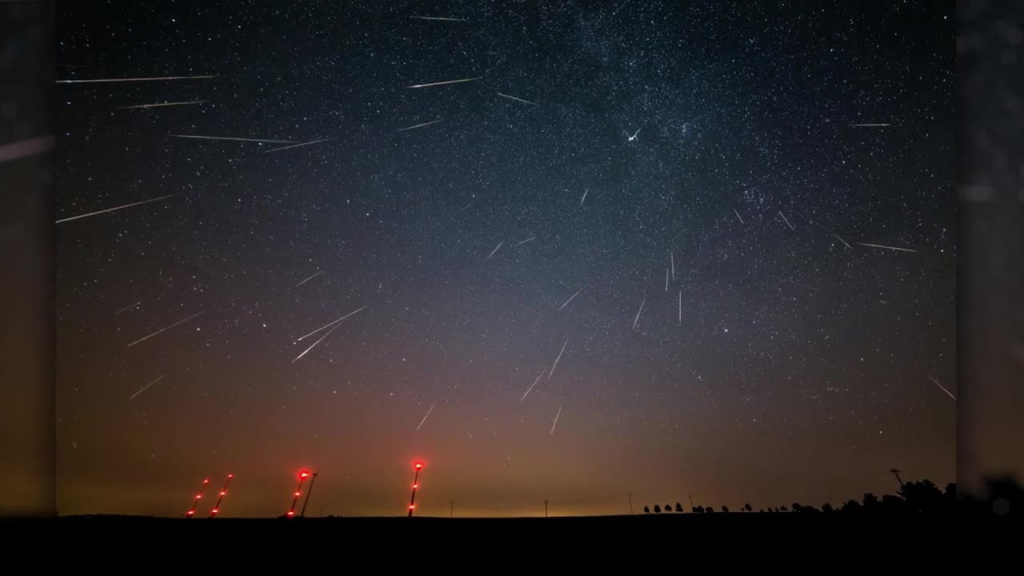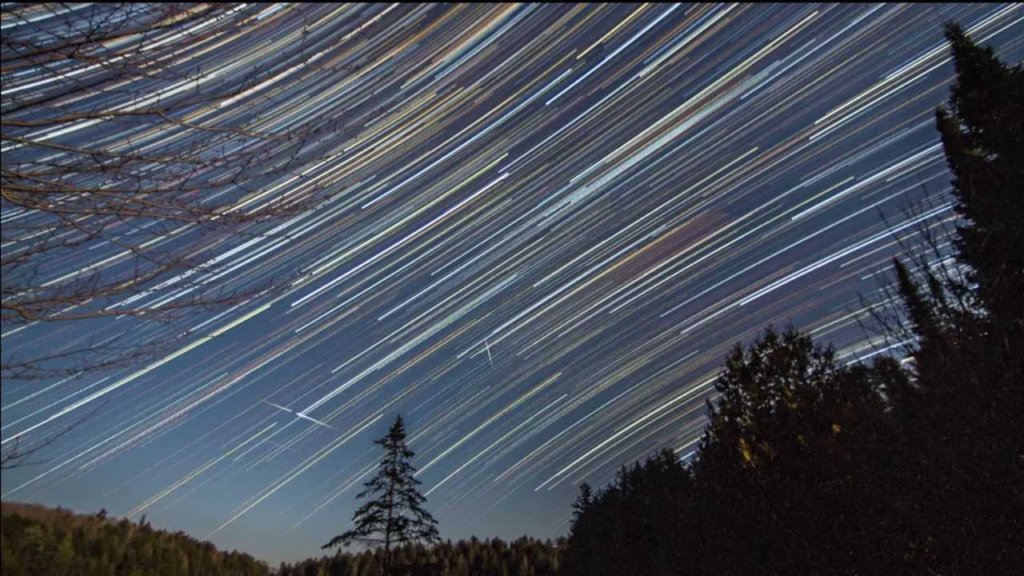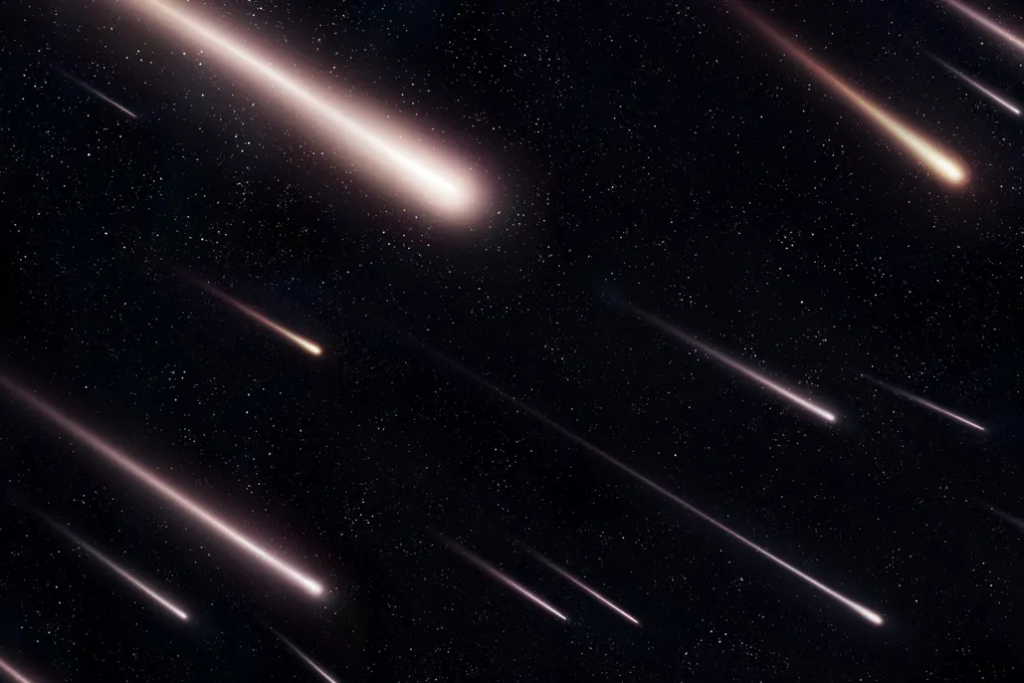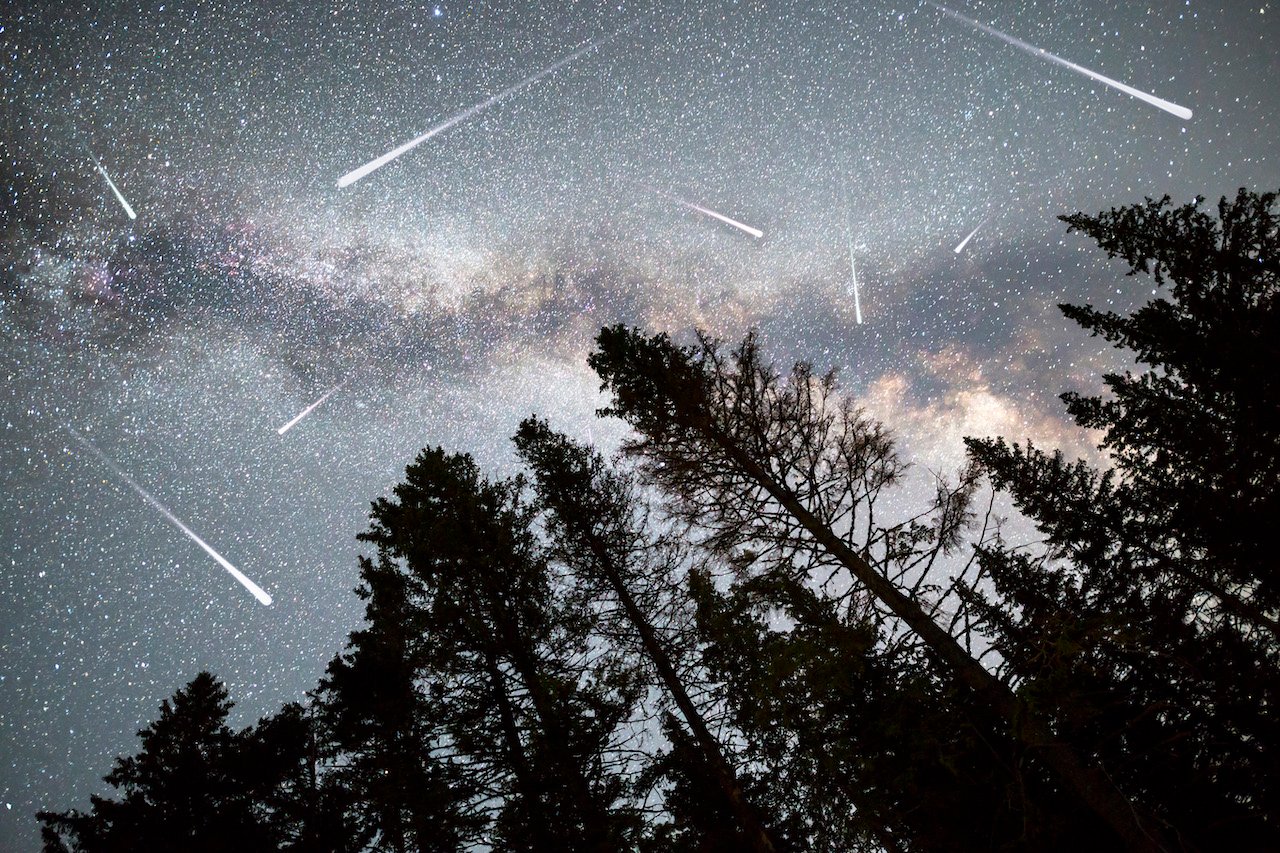Skywatchers, get ready for a celestial spectacle! Tomorrow night, the skies will light up with one of the most anticipated astronomical events of the year: a blazing meteor shower.
With an expected peak rate of 120 shooting stars per hour, this meteor shower promises to be a mesmerizing display of nature’s beauty. Here’s everything you need to know to make the most of this stellar event.
What Is a Meteor Shower?

Meteor showers occur when Earth passes through the debris left behind by a comet. As these tiny particles enter Earth’s atmosphere at high speeds, they burn up, creating streaks of light known as meteors. Meteor showers are named after the constellation from which they appear to originate, known as the radiant.
The Science Behind the Shower

This particular meteor shower is caused by Earth passing through the trail of debris left by Comet Swift-Tuttle. Discovered in 1862, Swift-Tuttle is a periodic comet with a 133-year orbit around the Sun. As the comet’s nucleus sheds material, these particles spread out along its orbit. When Earth intersects this debris field, we experience a meteor shower.
Why This Year’s Shower Is Special

What makes this year’s meteor shower exceptional is its predicted peak rate of 120 meteors per hour. This means that, under ideal conditions, observers could see an average of two meteors per minute. Such a high frequency is rare and makes this event particularly noteworthy for both amateur stargazers and seasoned astronomers.
When and Where to Watch

The meteor shower will peak tomorrow night, with the best viewing times starting from late evening until the pre-dawn hours. To maximize your viewing experience, follow these tips:
- Find a Dark Location: Light pollution from city lights can significantly diminish your ability to see meteors. If possible, head to a rural area or a designated dark-sky park.
- Check the Weather: Clear skies are crucial for meteor shower viewing. Check the local weather forecast and plan accordingly.
- Get Comfortable: Bring a reclining chair, blanket, and warm clothing. Lying down will give you a wider view of the sky, and being comfortable will help you enjoy the event for longer.
- Let Your Eyes Adjust: Give your eyes about 20-30 minutes to adjust to the darkness. This will improve your ability to spot the fainter meteors.
Viewing Tips for Optimal Experience

To enhance your meteor shower experience, consider these additional tips:
- Avoid Looking at Your Phone: Bright screens can ruin your night vision. If you need to use your phone, use a red filter or an app that reduces blue light.
- Be Patient: Meteor showers can have bursts of activity followed by lulls. Stick with it for at least an hour to get a good sense of the shower’s activity.
- Bring a Friend: Watching with friends or family can make the experience more enjoyable. Plus, you’ll have someone to share the excitement with when you spot a particularly bright meteor.
The Radiant Point

The meteors will appear to radiate from the constellation Perseus, which is why this event is known as the Perseid meteor shower. However, you don’t need to focus solely on Perseus to see meteors; they will streak across all parts of the sky. Looking slightly away from the radiant point will often yield the best viewing results, as meteors will have longer tails.
Safety Precautions

While viewing a meteor shower is generally safe, here are a few precautions to keep in mind:
- Stay Warm: Nighttime temperatures can drop significantly, especially in rural areas. Dress in layers and bring extra blankets.
- Bring Supplies: Snacks, water, and a thermos of hot drinks can keep you comfortable during your viewing session.
- Stay Aware of Your Surroundings: If you’re heading to a remote area, let someone know your plans and be cautious of wildlife.
Capturing the Moment

For those interested in photographing the meteor shower, here are some basic tips:
- Use a Tripod: Stability is key for long exposure shots.
- Wide-Angle Lens: A wide-angle lens will capture more of the sky.
- Long Exposure: Set your camera to a long exposure (10-30 seconds) to capture the streaks of meteors.
- High ISO: Use a high ISO setting to pick up more light, but be mindful of potential noise in your images.
Conclusion
Tomorrow night’s meteor shower is a celestial event not to be missed. With the potential for 120 shooting stars per hour, it promises to be a dazzling display that will captivate viewers of all ages. Whether you’re a seasoned astronomer or a casual stargazer, this event offers a perfect opportunity to connect with the wonders of the night sky. So, prepare your gear, find a dark spot, and look up—you won’t want to miss this spectacular show.

